
Welcome |
|
|
|
|
|
|
|
|
|
|
|
|
|
|
|
|
|
|
|
|
|
|
|
|
|
|
|
|
|
|
|
|
|
|
|
|
|
|
|
|
|
|
|
|
|
|
|
|
|
|
|
|
|
|
|
|
|
|
|
|
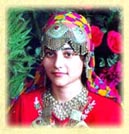
|
|
|
|
|
|
|
|
|
|
|
|
|
|
|
|
|
|
|
|
|
|
|
|
|
|
|
|
|
|
|
|
|
Information about
Srinagar |
|
Srinagar, the beautiful city was established by the Emperor Ashoka, about 2300 years ago when his daughter Charumati took a fancy to the Dal Lake during her visit to the region. The present city was founded in the sixty century by King Pravarsen. The king created various serpentine waterways that still wriggle through the city like the sprawling Dal Lake, and the smaller and more secluded Nagin Lake. Srinagar has been described by some Western visitors as the Venice of the East. Srinagar has been unable to show off the full extent of its architectural heritage. Srinagar’s old houses on the Jhelum river with labyrinthine alleys appears not to have changed since the time of the Mughals.Srinagar is transformed into a different world every season. It is snowbound and harsh in cold winter whereas it is very beautiful during spring and summers, when flowers bloom all over the valley, snow melts and trees take a new shape. The roof-tops of the houses in Srinagar are also turned into the flower gardens. June and July are the two good months for trekking, trout-fishing and water sports. |
|
|
|
|
Houseboats in Srinagar |
|
One of the unique charm of Srinagar are the houseboats. The houseboats are the floating little hotels which can be seen on the edge of the Dal Lake or in the secluded areas of the Nagin Lake. There are about 1300 houseboats moored on the waters of the lake and about 1,000 are on the official approved list of the Tourist Department of the State Government. The government has fixed tariff for each houseboat depending on the facilities it offers. Living in a houseboat is an exotic way of spending a holiday in Srinagar. |
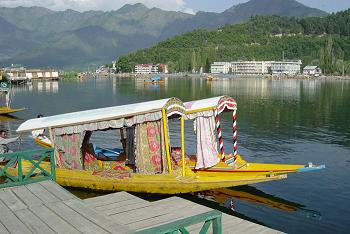 |
|
There is an interesting story about the origin of these houseboats. Once, the British had taken a fancy to Kashmir and wanted to come here for a holiday during summer. But the wily Maharaja had different ideas. He did not want the British to come in large numbers and indulge in conspiracies to dethrone him. Therefore, he forbade the non-state subjects to own landed property in Kashmir. But, the British had a clever idea. They built houseboats which were located on the waters of the Lake and invited their friends. They trained the Kashmiri cooks in the western cuisine. The British enjoyed their cruises on water in tiny hand-pedalled “Shikaras”, the little boats with giant mattresses, cushioned seats and curtains. Now, most of the old British houseboats are not there, but still there are some better and roomier houseboats which could surpass the comforts of a 5-star hotel. Some of the names of the houseboats are like White House, Washington, Love-in-the-Mist and Noorjehan. The owner and his family live in an adjoining separate houseboat where the members of the family provide service to the guest. You can travel anywhere from the tiny Shikaras. For the rest of the needs as well, you don't have to go anywhere as there are various vendors who sell the things on the boat. The families huddled in large vessels move up and down the river to transport
timber. |
|
|
|
|
|
People in Srinagar |
|
The men in Srinagar are dressed in robes which are uniquely Kashmiri – a long, loose robe (Choga) which hangs down to their knees. In winter, hey carry under this robe a burning Kangri (wicker basket) to keep them warm. The women of Kashmir are strikingly beautiful with almond-shaped eyes and Tartar cheek-bones. Old men wear white turbans and yonger people wear fur caps. Smoking the hookah is a habit shared by most
Kashmiris. |
|
|
|
|
Getting around in Srinagar |
|
The most delightful way of getting around Srinagar is to go by Shikara, the little gondola. You can hire a
shikara to go round the Mughal gardens, gliding on the placid waters of the lake. The shikaras have very
beautiful names and cushioned interiors. From Jhelum, these shikaras glide gently into the Dal and
Nagin Lakes. The another way of going round Srinagar is to hire a bicycle and go round the Mughal Gardens
through Srinagar’s wide boulevards. It is also an inexpensive way of seeing the city. There are various places in Srinagar which can't be covered by foot. The horse-drawn “tongas” also offers an
alternative mode of transport to visitors. |
|
|
|
|
Tourist Attractions in
Srinagar |
|
The various tourist attractions in Srinagar are the Shankaracharya temple, Jama Masjid, Dal and Nagin Lake, Mughal Gardens - Nishat, Shalimar and
Chahma Shahi and Hari Parbat. Besides this, Pathar Masjid, Shah Hamdan mosque are the famous mosques in Srinagar.
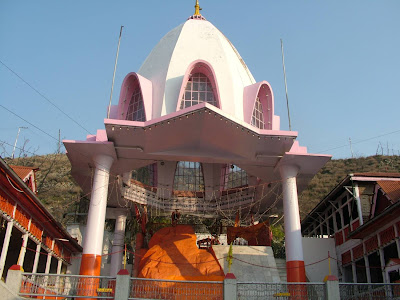 |
Shankaracharya Temple
The Shankaracharya temple is the unique landmark of Srinagar. This temple is located on a sharp hill, about 1000 feet high overlooking the city. There are
stone steps which will take you right on top where a small temple dedicated to Lord Shiva stands. This temple was built in the memory of the
Shankaracharya who came to Kashmir from Kerala some 1200 years ago to revive Hinduism. From the top of the
Shankaracharya Hill, you can have a panoramic view of the valley, city, lakes and their houseboats,
waterways, gardens, the confluence of the Jhelum and Dal Lake and the seven original
bridges spanning the serpentine flow of Jhelum river. |
|
|
|
|
Jama Masjid
The Jama Masjid is the largest mosque in Kashmir. This mosque was built in 1402 out of wood and bricks. Jama Masjid is the prominent example of the
Kashmiri mosque, and combination of Islamic, Hindu and Buddhist styles of architecture distinguished by its tall spires. Inside, the masjid are the frayed
carpets and stone alcoves and the 40-foot high wooden columns, out of which about 300 of them support the roof. The foundation of this mosque was laid by
Sikandar in 1398 AD. The mosque was burnt down three times and rebuilt by Aurangzeb in 1674, who, when he heard that fire had gutted the mosque, first
asked whether the chinars were safe. Even now, there are chinars in the courtyard. In the
upper hall, there are the intricately wrought |
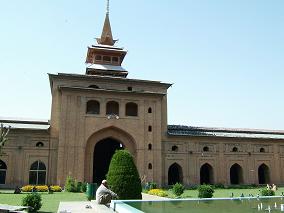 |
|
Khatamband roof, the
glint of chandeliers, the mirror-work on the pillars and the papier-mache on the walls. In the summer and autumn, the hall is used for weddings and dinners
for about 350 people. On Friday, thousands of people visit the Jama Masjid for prayers. |
|
|
|
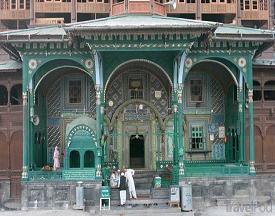 |
Shah Hamdan Mosque
The pagoda-like Shah Hamdan mosque is located on the Naseem Lake. This mosque is believed to have a relic of the sacred hair of the Prophet
Mohammad. This mosque is made entirely of wood and named after the saint who is credited with the peaceful conversion of millions of Hindus into Islam.
The non-Muslims are not allowed into the mosque but they can only see the intricately painted papier-mache ceiling and doors.
Hari Parbat
The Hari Parbat is located beyond Nagin Lake. This famous and small fortress was built three hundred
years ago by Emperor Akbar on the top of the hill.
This hill is believed to have appeared at the spot
where goddess Parvati killed a demon. |
|
|
|
|
Nagin and Dal lake
Dal and Nagin Lakes are fed by natural springs. The waters in the Dal and Nagin lake are transparent. But, due to overuse of the Dal lake over the years for
growing of vegetables, tourism and other purposes, its size has been reduced to almost half. Nowadays, the government is trying to clean the lake. The
various houseboats are located along the banks of the Nagin and Dal Lake. Nagin Lake is clean and provides quiet solitude to tourists. The vegetable market
is also located on the Dal and Nagin lake, only a short shikara ride away. Early in the morning, the farmers emerge from a maze of floating gardens and
canals bringing boat-loads of their produce. They gather
in an open waterway to buy, sell or barter
their produce. |
 |
|
In the morning, the first rays of the dawn
tinge the wild gardens of lotus flowers with a delicate pink. The
kingfishers can be seen darting about, flashing their wings. As the day breaks, the lakes are
alive with other activities. It is a unique world of its own which can not be seen anywhere else. |
|
|
|
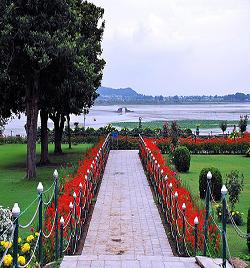 |
Mughal Gardens
Nishat, Shalimar and Chashma Shahi are the three famous Mughal gardens which are situated around the Dal Lake. These Mughal gardens are beautifully
laid out with fountains and cascading streams. The Chashma Shahi is the first Mughal Garden which is set into the slopes of its circling hills. Chashma Shahi
means the Royal Spring and is attributed to Shah Jahan. The Chashma Shahi is named after a natural
spring that flows here. The spring waters are believed
to have curative properties. The Pari Mahal is situated
nearby which was the Sufi Garden College. Pari Mahal, once a Buddhist monastery, was converted
into a School of Astrology by Emperor Shah Jahan’s son, Dara Shikoh. Nishat and Shalimar are very large
gardens, located much further down the |
|
boulevard. Both these gardens are built on a symmetrical plan of
central waterways with fountains dividing a series of garden terraces. Nishat is the larger
of the two and has an impressive plantation of Chenar trees on its highest terrace. The trees were planted during the Mughal
period perhaps by the kings themselves. The Shalimar Garden is the most famous garden due to its
romantic association with Emperor Jahangir and his lovely queen Noor Jahan. An
interesting Sound and Light Show on the love story of the two has been mounted here. The central piece on the upper terrace of
Shalimar is the Baradari. It was here that Jahangir relaxed with his beautiful bride surrounded by a million roses and the heady smell of all of them. |
|
|
|
|
Dachigam National Park
Dachigam National Park covers an area of 141 square kms. and located about 22 kms from Srinagar. The
park is divided into two sectors - Upper and Lower Dachigam. There is a road from Srinagar to Lower
Dachigam while Upper Dachigam can only be explored on foot. The park was declared as a national park
in 1951, and is the habitat of the endangered hangul or the Kashmir stag, the only species of red deer to be
found in India. Winter is the best time to view the hangul, when they congregate in the shelter of the lower
valleys. Some other animals of the park are the Himalayan black bear, leopard, snow leopard, rare
musk deer, Himalayan marmot, species of wild goat like markhor and ibex and varieties of exotic Himalayan birds
including the crimson tragopan, the iridescent monal pheasant, the blood pheasant and the koklass
pheasant. |
|
|
|
|
|
How
to reach Srinagar |
|
By Air:
Srinagar is connected to Delhi, Bombay,
Ahmedabad, Amritsar, Chandigarh, Jammu and Leh by Indian
Airlilnes Services.
By Rail:
The nearest railway station is Jammu Tawi
which has direct connections with Agra, Amritsar, Bhopal,
Bombay, Calcutta, Cochin, Delhi, Kanyakumari, Lucknow, Madras,
Pune, Trivandrum, Varanasi, etc.
By Road:
Srinagar is connected by road to Jammu, Leh,
Amritsar, Chandigarh, Delhi, Gulmarg, Pahalgam and Kargil.
|
|
|

